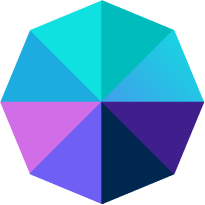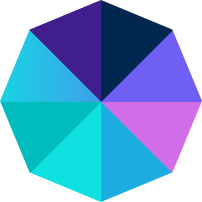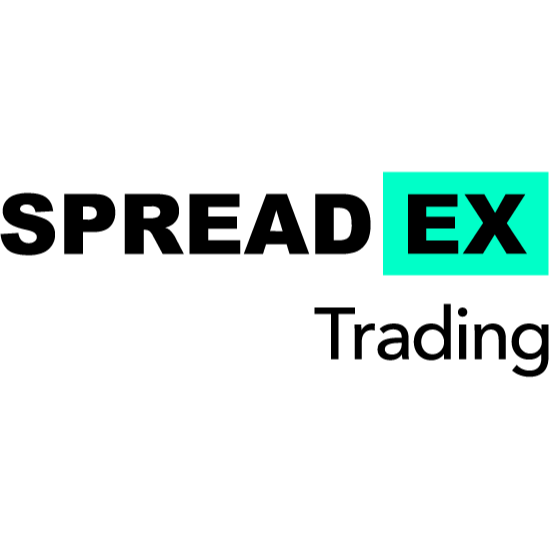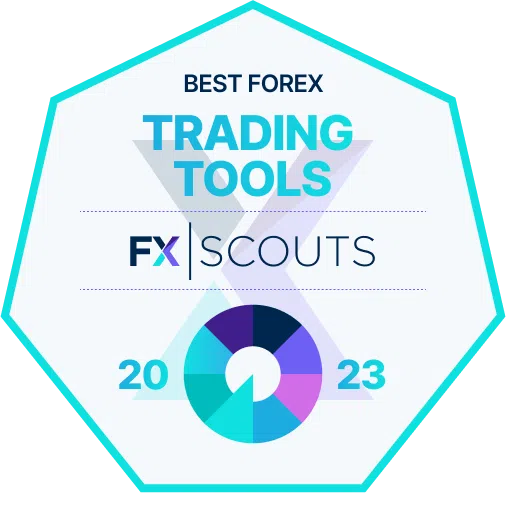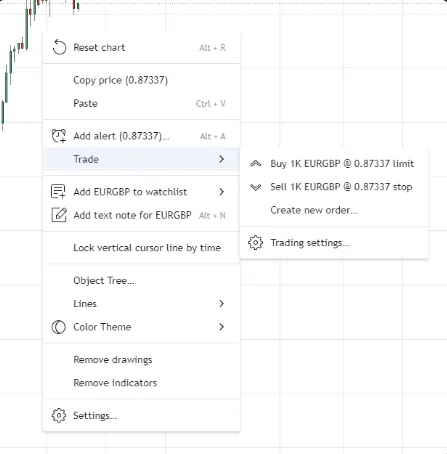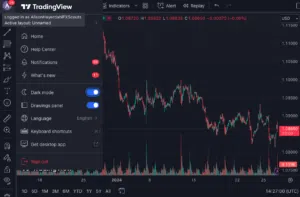TradingView’s evolution and current offerings
Over the years, TradingView has evolved into a comprehensive trading platform catering to a wide range of financial market participants.
Powerful Charting Functions: From its beginnings as a charting tool, TradingView has continually enhanced its charting capabilities. It offers powerful, customisable, and user-friendly charting tools, enabling users to analyse market trends precisely.
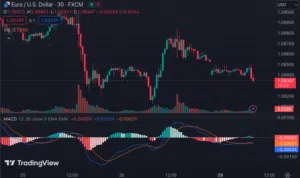
Comprehensive Range of Analysis Tools: The platform has expanded its toolkit to include various technical analysis instruments, fundamental data overlays, and custom indicator options, making it suitable for both technical and fundamental analysts.
Community Features: TradingView hosts a large and active community where traders and investors share insights, trading ideas, and strategies. You can see what other active traders are doing, ask questions, gather ideas, collaborate with others in similar markets, and even sign up for trading courses offered by experienced members. This social aspect of TradingView sets it apart from many other platforms, creating an environment of shared learning and collaboration.
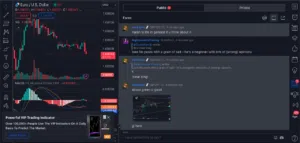
Asset Tracking and Trading: Initially focused on charting, TradingView now enables users to track a wide range of assets, including forex, stocks, cryptocurrencies, and derivatives. The integration with various brokerage platforms means users can analyse and execute trades directly through TradingView.
Platform Accessibility: Over the years, TradingView has expanded its accessibility. It now has dedicated mobile and desktop applications so users can access TradingView’s features virtually anywhere.
Custom Alerts: Traders can set up personalised alerts for price movements, news releases, or technical triggers.
Extensive Indicator Library: Traders can access over 100 pre-built technical indicators or create custom tools.
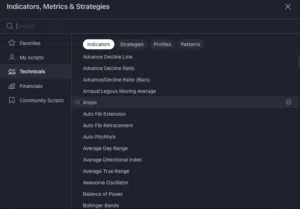
Continuous Feature Expansion: TradingView has been adding more features and tools, including social media integrations and a growing list of supported brokers, reflecting its commitment to meeting the evolving needs of its users.
How to use TradingView
- Choose a broker from the list above that integrates with TradingView and open an account with them.
- Connect the broker account to a TradingView account.
- Analyse the markets using TradingView’s tools and advanced charting package.
- To open a trade on TradingView:
- Under the chart title, you will see red and blue buttons with the sell rate and buy rate, respectively:

- Clicking on one of these two buttons will display a panel with all the options you have before opening your position, including the trade size, whether you would like to open a market or limit order, take profit and stop loss tabs and the levels at which you’d like them set. At the bottom, you will see the tick value and trade value.
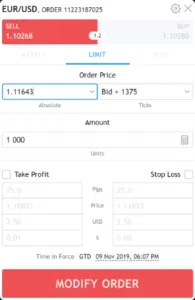
- The trade will be executed directly on the platform, which the linked broker will carry out.
The actual trading hours and markets available for trading will depend on the broker you choose, the financial instruments they offer (like stock exchanges, forex markets, etc.), and the trading hours of those markets.
TradingView’s Pricing
TradingView provides a complimentary basic version and several premium offerings with more advanced functionality and features:
Free Plan: This allows users to start with the essentials, including core charting and analysis tools and access to the community. Most beginner traders will find that TradingView’s Free Plan is more than enough for their needs. However, we find that the Free Plan has some limitations:
- You can only add three indicators per chart
- You can’t add custom timeframes (for example, 8-hour, 6-hour, or 3-day charts)
- There are plenty of ads and annoying pop-ups.
- You only have one server-side alert
- There is limited community access
- You can only access a basic stock screener with three filters.
Premium Plans: These offer numerous advantages not found in the free version, including expanded customisation options, more indicators, additional chart types, and the ability to save multiple chart layouts. The table below provides more detail on each of the plans:
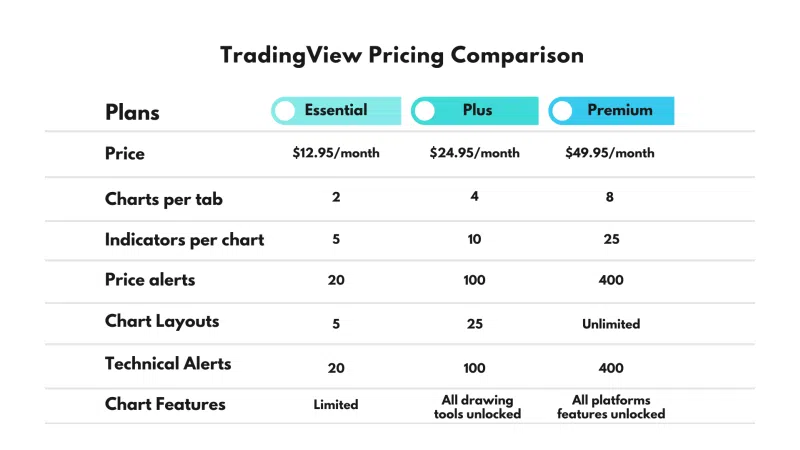
From our extensive experience with TradingView, we’ve observed that the free version of TradingView generally suffices for casual users or those not extensively involved in trading. However, for frequent or professional traders, the upgraded versions provide valuable tools and features that enhance the trading experience.
How to get TradingView’s pro tiers for free
TradingView’s paid plans can cost up to 719.40 USD per year. However, most brokers listed above offer free TradingView Essential, TradingView Plus, or TradingView Premium plans, depending on the trader’s trading volume.
Benefits of using TradingView
A broad selection of analytical tools: It offers a comprehensive set of technical analysis tools, encompassing many different indicators, drawing instruments, and charting choices, all of which are customisable.
Tools for fundamental analysis: TradingView provides real-time data feeds and news updates to help traders make well-informed decisions.
Easy instrument comparison: Traders can effortlessly compare various instruments on a single chart. This function allows users to spot correlations, trends, and patterns among multiple assets, helping them develop more effective trading strategies.
Community Driven: Traders can benefit from the collective knowledge of a large trading community.
Drawbacks of using TradingView
While Tradingview has outdone its competitors on many fronts, including its functionality and features, we have found a few drawbacks to using the platform:
Limited Broker Integration: TradingView does not integrate with many brokers. This limits some users’ ability to execute trades directly from the platform. However, you can choose a broker from the list above, all of which are highly rated.
Basic Features Require Subscription: Many of TradingView’s more advanced features are not available in the free version. Access to these features requires a paid subscription, which may not be ideal for all traders, especially those just starting out.
Overwhelming for Beginners: TradingView’s extensive range of tools and data can be overwhelming for beginners. The platform has a steep learning curve, and navigating the myriad features and options can be challenging for new users.
Reliance on Community Scripts: Many of the indicators and tools available on TradingView are community-generated. While this can be a strength, it also means the quality and reliability of these tools can vary significantly.
Performance Issues with Complex Analysis: Users conducting complex or data-intensive analyses might experience performance issues, such as slower loading times or lag, especially on less powerful computers.
TradingView vs Autochartist
Traders can access TradingView independently of a broker by taking out a subscription. The cost ranges from free to US$59.95 per month. Other charting and analytical tools such as Trading Central and Autochartist can only be accessed via a broker’s platform. However, once you’ve joined the broker, you can then access the services provided by Trading Central and Autochartist for free.
One of the main advantages of TradingView over Autochartist is its ability to execute trades. While Autochartist can highlight a potential trade and give you information about possible changes, it is the trader who has the final say about opening and closing positions. With TradingView, by contrast, you can see the buy/sell button directly on your chart. You can also place limit or stop orders directly from your charts.
The other advantage of TradingView is that you can interact with other traders, follow their ideas or even post your own ideas – an option that is not available on Autochartist.



